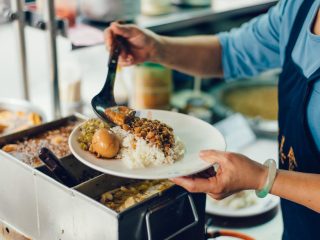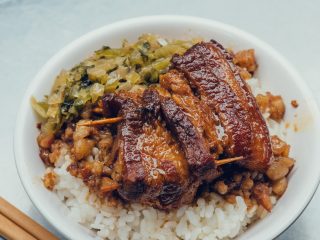Text by Yawen Cheng
Photo by Jr Tan Lin
Just what goes into making the perfect bowl of braised pork rice? Let us break it down for you.
The beginning of February was cold. A group of people had gathered under the Banyan tree near the Cisheng Mazu Temple, waiting for Auntie Ah-Kui’s braised pork rice and pork rib soup.
We went with Soac, who won the Best Host in a Variety Program category of the Golden Bell Awards, and who is now the founder of the Taiwan Tongue. As he took a seat, he said, “This place is like a mini Europe; where else can you find this kind of outdoor bar in Taipei? This is super chill!”
The braised pork made by Auntie Ah-Kui smelled particularly good that day. Soac ate one bowl of the braised pork rice, suggesting that one should have pickled radish with the braised pork rice to bring out the flavor. The taste of the braised pork rice was even better after cooling down. It would be a good match with pork rib soup.
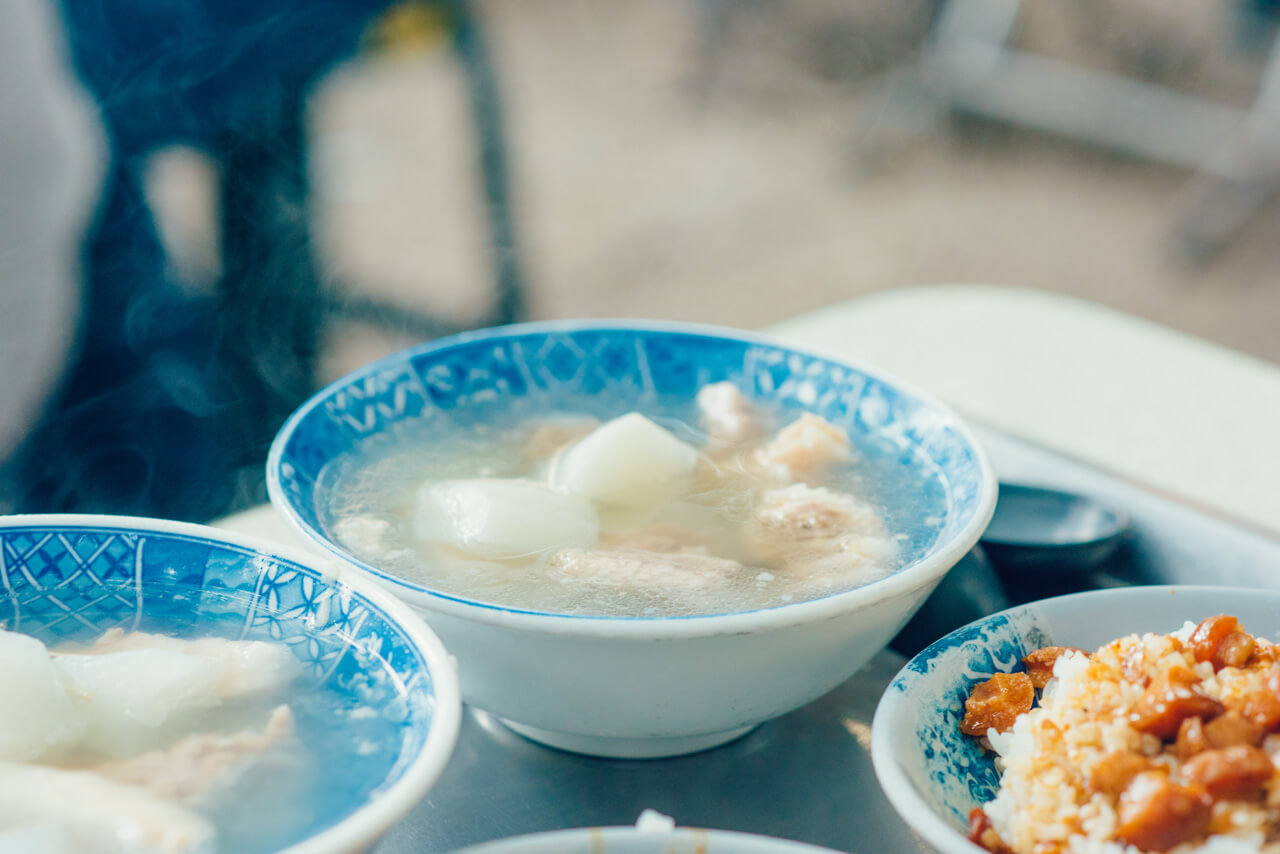
To be honest, I am not a great braised pork rice lover, and I usually skip this choice when I find it on the menu. However, I joined Soac and the Taipei West Town group to wander about the west part of Taipei, trying braised pork rice at one place after another. I encountered a few unexpected surprises. Some of them had greasy meat, which I was reluctant to try at first. But it turned out to be amazing, tasty yet not greasy. Some of them were the dark color of the stewed soy sauce, yet not salty. The combination of tender and fat meat reversed my impression of braised pork rice.

The braised pork rice that the Taiwanese writer and gourmet Guozhi Shu described as Taiwan’s “national dish” is the main subject Soac has been researching.
Soac started the Taiwan Tongue project in April of 2017. Soac is a straightforward man and, like many other young chefs, is greatly influenced by Western culture. He studied the culture of foreign food but knew nothing about his own country.
He can easily distinguish the year, origin and the level of a vintage wine, but he does not know the origin, production or usage of Taiwanese sauces. These were the reasons that made him bring his focus back to Taiwan.
He has been exploring and discovering his roots, taste by taste, and promoting Taiwanese dishes that can be made easily at home.

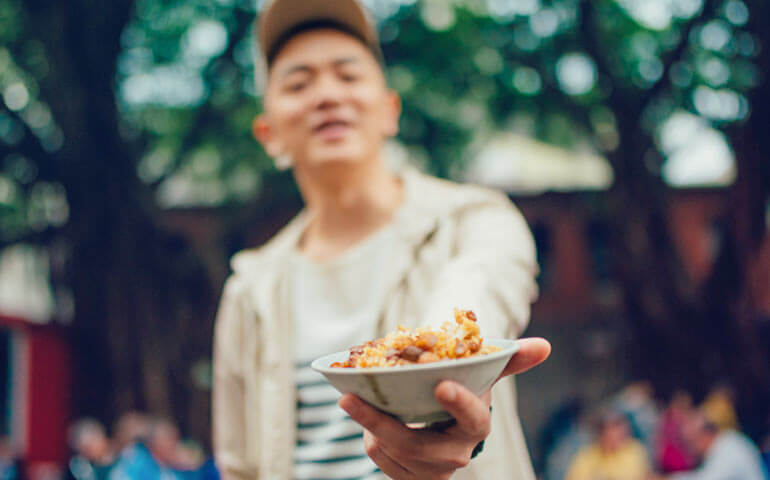
In this braised pork rice project, Taipei West Town invited Soac to try five different selections of braised pork rice. Soac thinks that the best braised pork rice has the following elements:
1. The texture of the meat
“I like meat that will melt in your mouth, though you can still feel the texture of the pork with every chew. Maybe this is because I started learning from Western cuisine; I emphasize the original taste of the ingredient. Accordingly, I prefer Taiwanese dishes that have more detail. Making this kind of dish requires a high level of cutting technique by the cook. They need to cut the meat into the appropriate size, control the time of stewing, and the also the fire.”
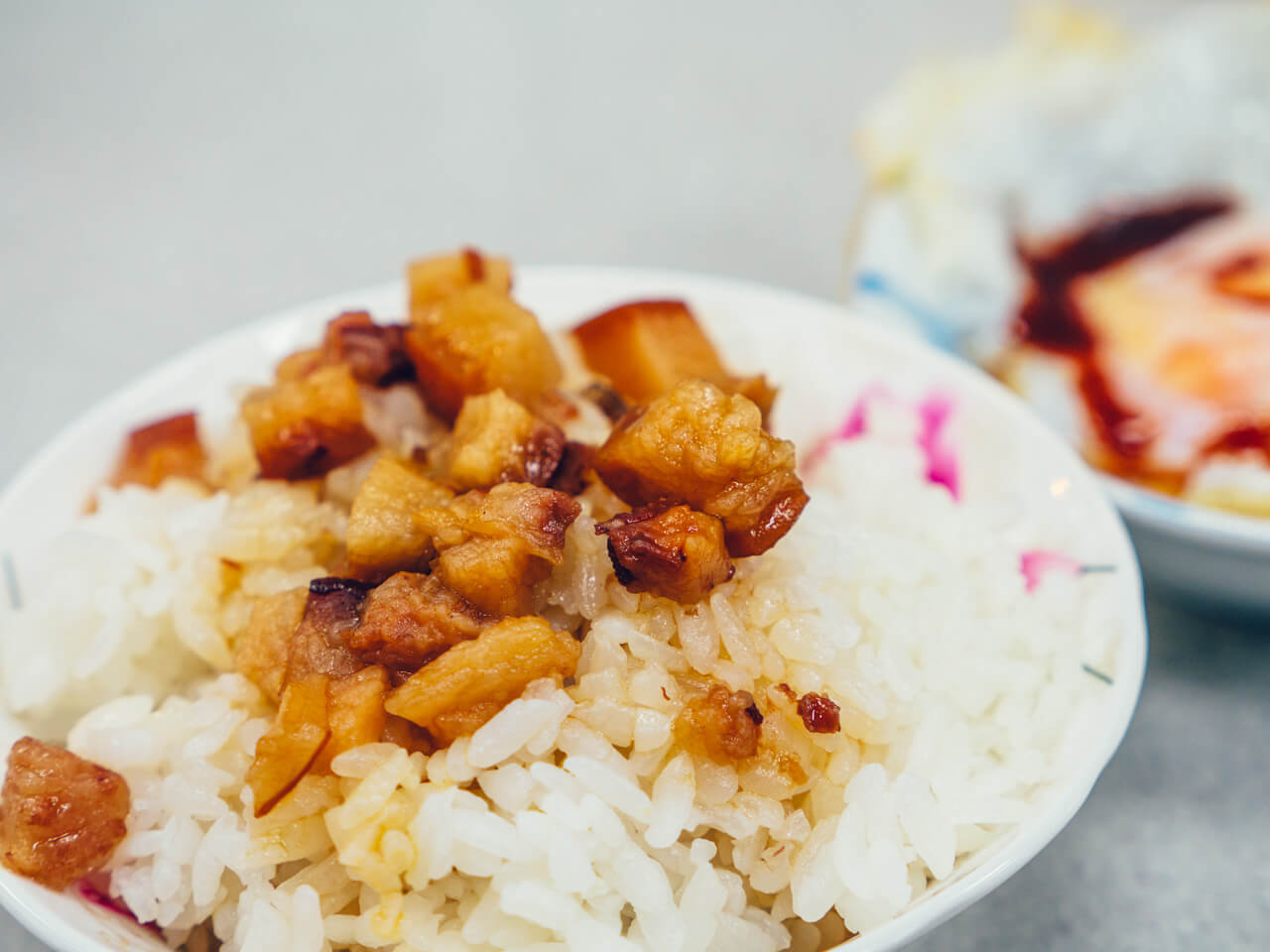
2. The “braised,” “pork,” and “rice” aspects must each play their roles
“Braised pork rice is easy to prepare, with just three elements as indicated in its name: sauce (stewed soy sauce), pork, and rice. Each element needs to play its role well and not outshine the others. For example, the amount of stewed soy sauce needs to leave some white rice, instead of covering the whole bowl of rice with sauce and meat.”
“On the other hand, there should be a certain portion of meat in the sauce, instead of just soy sauce. Up until the last bit of rice is consumed, enough sauce and meat should remain in order to mingle with the rice. Each element plays its part so that the perfect braised pork rice can be made.”
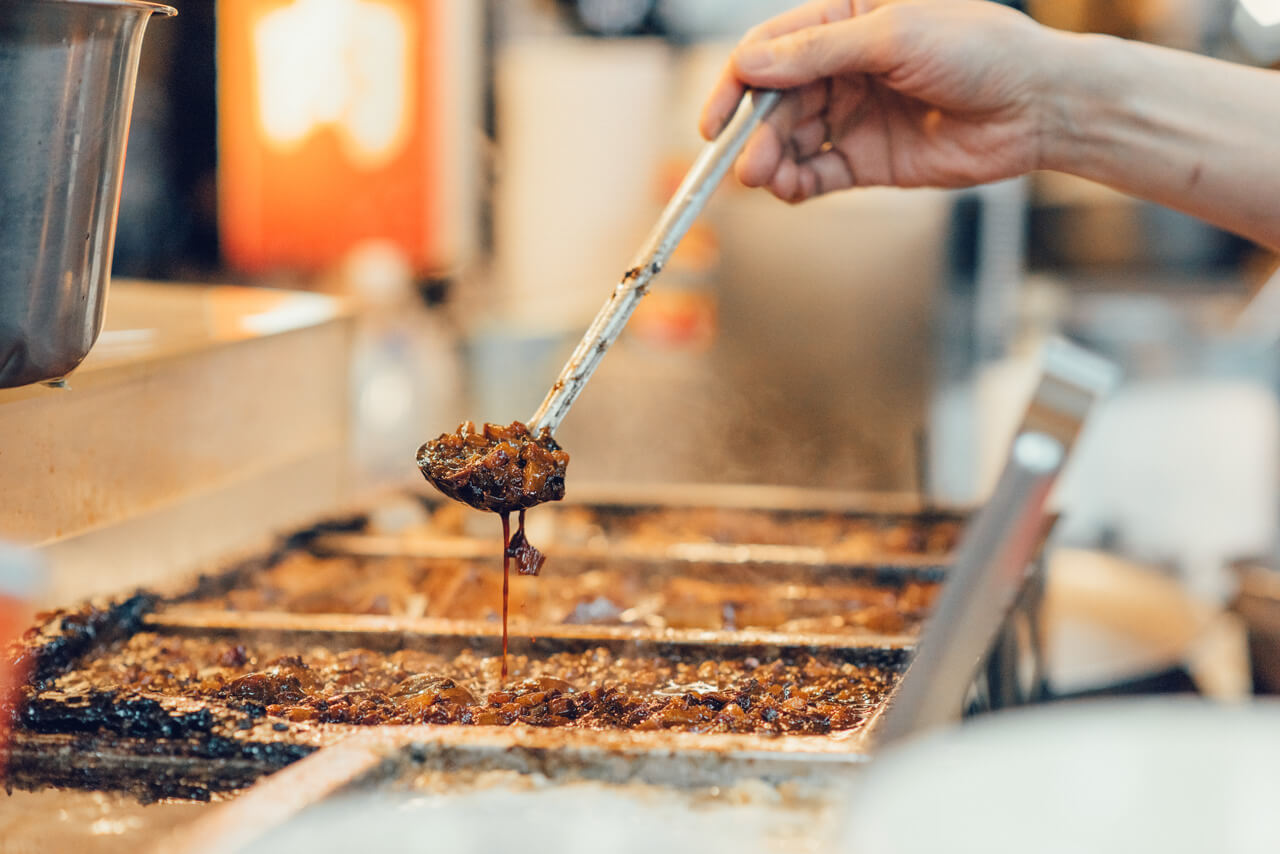
3. The flavor of the soy sauce
“I prefer sauce that is sort of sweet, but this is just my personal preference. The sauce in each restaurant is the crucial factor of the taste. From the selection of the soy sauce, ingredient braising, the timing of putting in the meat, to the duration of the braising, each procedure will contribute to the outcome of the sauce.”

4. Springy rice but firm texture
“The type of rice, the time spent braising, and the ratio of the water all affect the taste of the rice. I prefer a grainy, firm rice texture, with a bit of a chewy feeling. It should not be wet; otherwise the rice sticks together after the sauce is added on. It should not be too dry either, because then the sauce and the rice won’t mingle together. Therefore, chewy rice with braised sauce is just about right.”
5. Lard oil is a must
“I think lard oil is essential, and the fat should be spread in the sauce and merged into the rice with fragrance, bringing out the taste of the rice. It is like the simple rice with lard of the old days. The fragrance can bring out the spirit of the rice.
6. Refreshing side dishes
“Braised pork rice is a savory dish, so it is good to have with some refreshing side dishes, such as pickled cucumbers, radishes, or cabbage. These sweet and sour side dishes can harmonize the strong taste of the braised pork rice.”
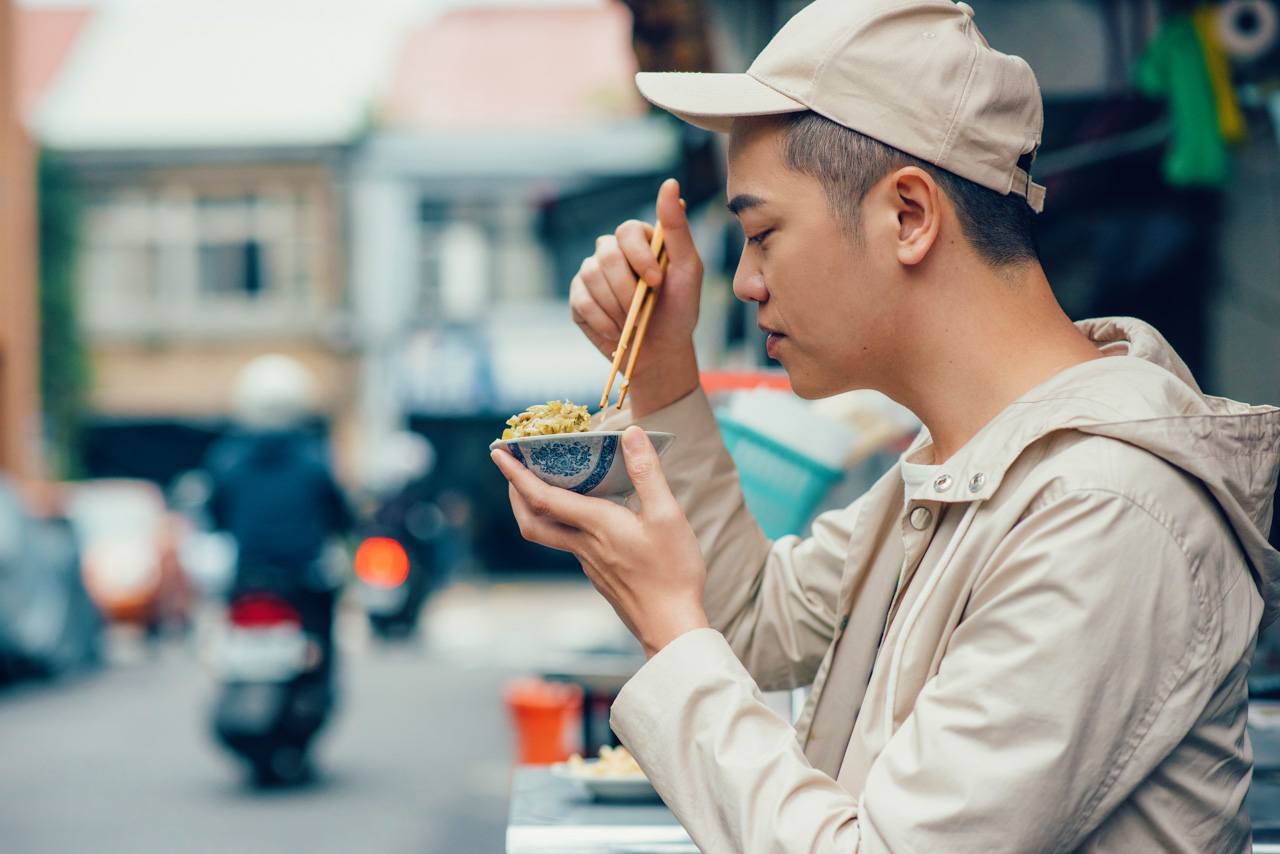
The first stop for braised pork rice is Zhu Ji Sticky Oil Rice (“You-fan” in Mandarin). Though the sign says sticky oil rice, the braised pork rice is fat but not greasy, which is quite amazing. I especially like a medium-cooked egg on top of the rice, just like the homemade dishes seen in Japanese dramas. Add some thick soy sauce, and the egg yolk drains out to blend with the soy sauce. The taste is rich and just right. However, Soac prefers to have a stewed egg instead of a medium-cooked egg.
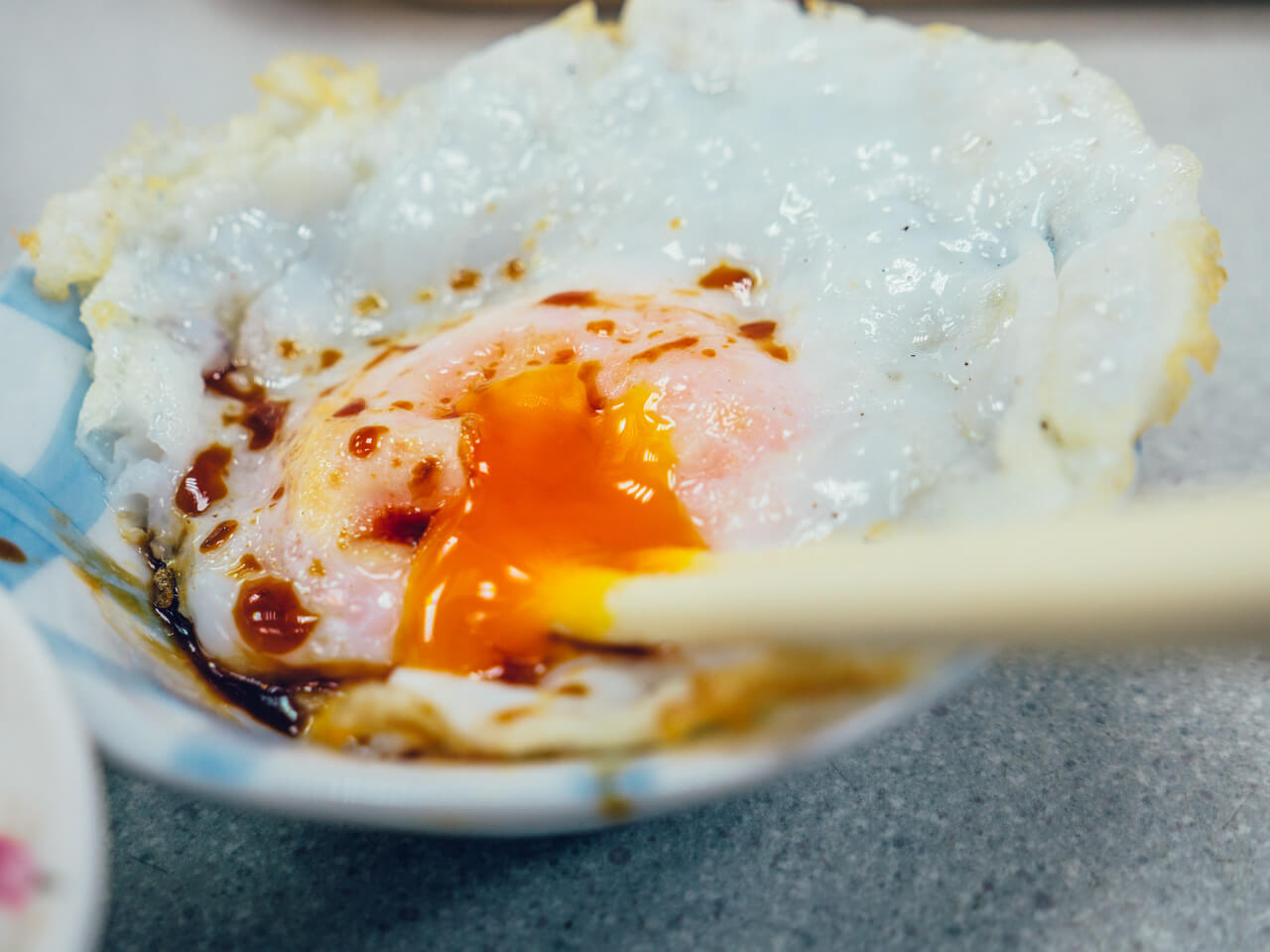
The soy sauce of Zhu Ji Sticky Oil Rice is not thick, not the type that Soac usually likes, but Soac thinks that the fat minced meat on the top of the rice tastes really good, without any gamy smell. Though the taste is rather heavy, the size of the minced meat is just right in that one can feel the texture of the meat. Half a bowl of rice is a good amount for the morning.

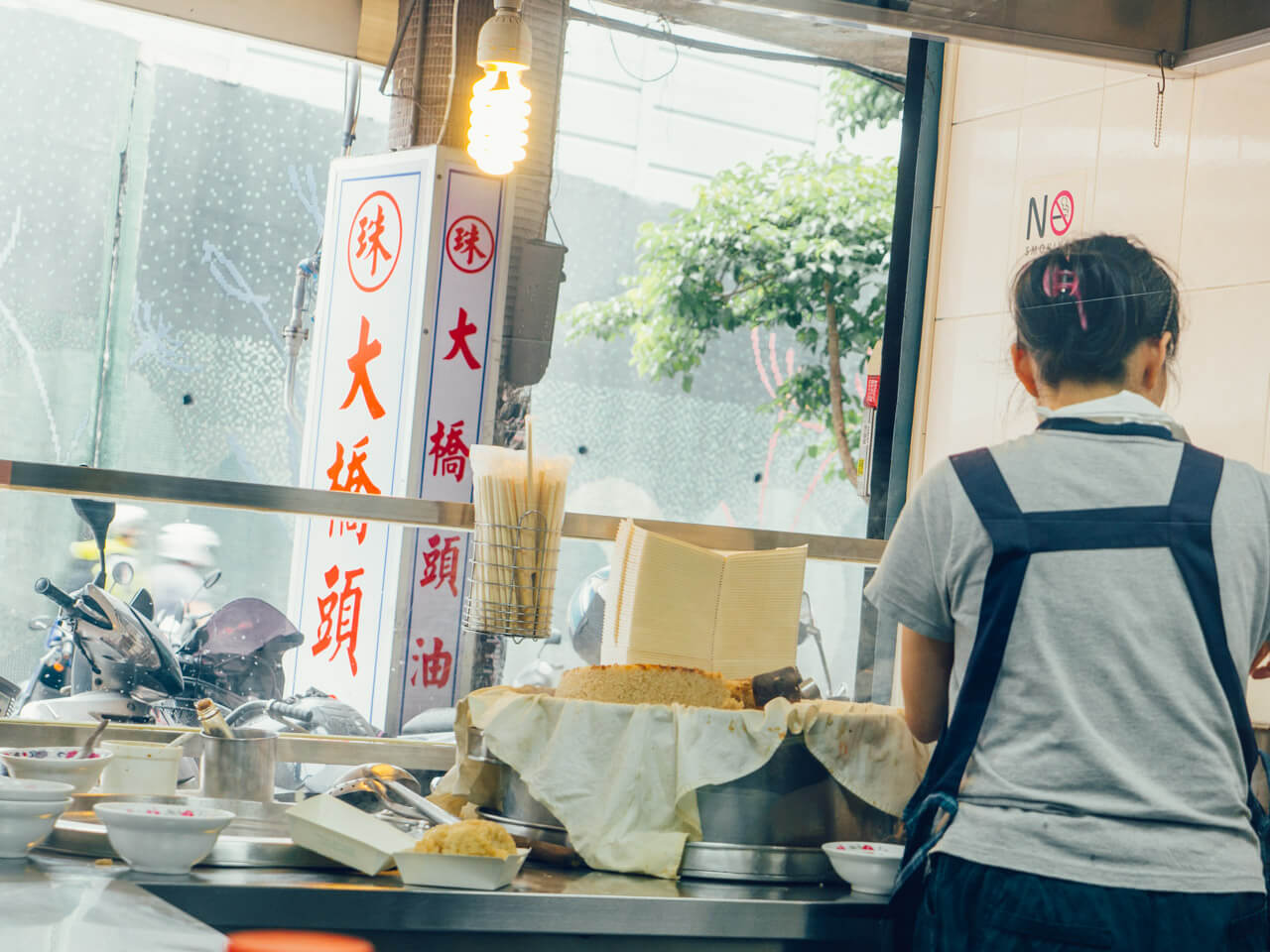
The Zhu Ji Sticky Oil Rice near the Daqiaotou MRT Station reminds him of the good old days when he had Daqiaotou braised pork rice at the Jingmei Night Market while studying in university. Around midnight, Soac and his friends would meet up at the food stand and sit in front of the stall. The food stand was like an open kitchen, where the owner’s every single movement can be seen clearly, including their cutting skills, the amount of soy sauce added, the movement of blanching, the sounds, the smells, and the heat, all in front of one’s eyes. Soac said, “Sometimes the owner would treat me to some soup when I went there for braised pork soup after my part-time job.” This kind of atmosphere made him feel at ease and comfortable.
Braised pork rice can be found on corners throughout cities all over Taiwan; there is another famous one in the Huaxi Street Night Market, called Xiao Wang Braised Pork Rice.
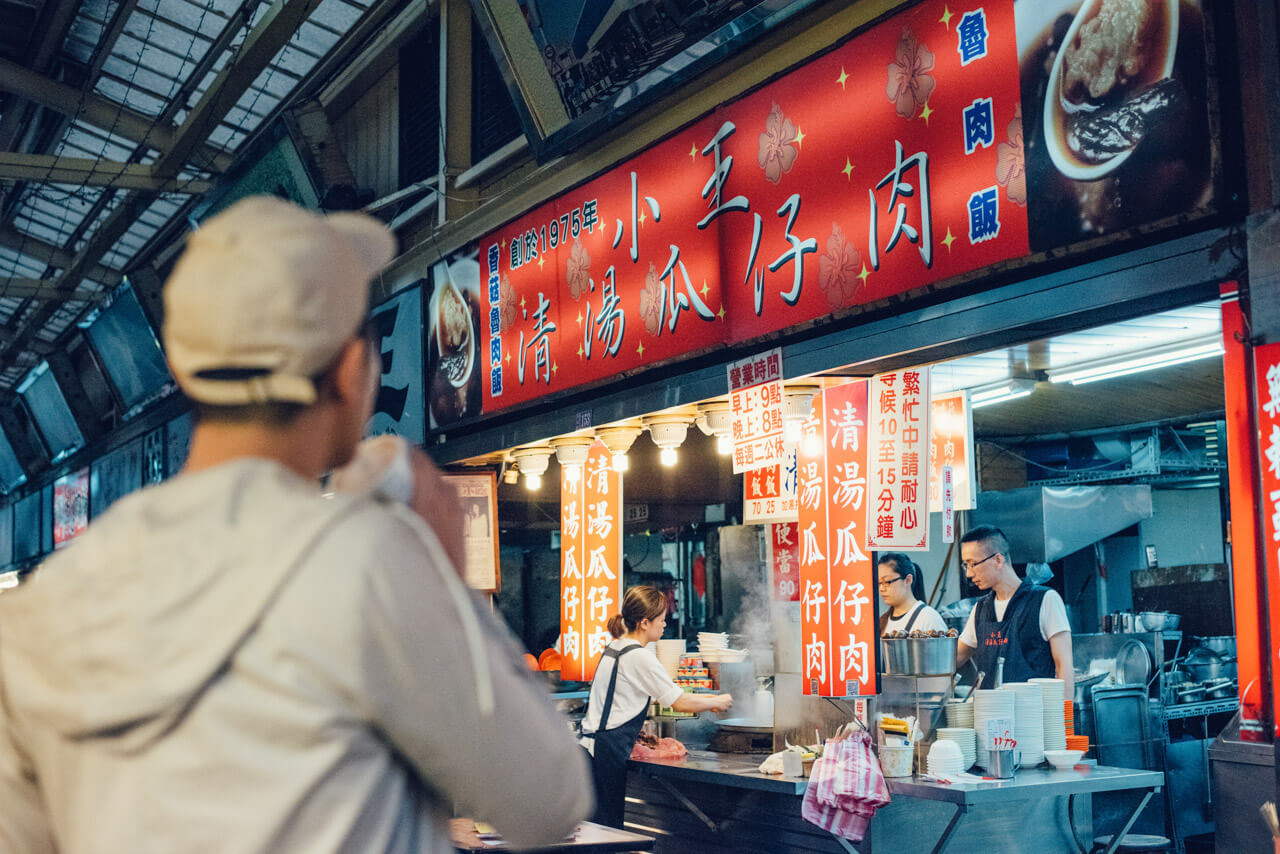
It was the only one still open in the morning, and it was already full of customers.
Soac read the stories about Xiao Wang on the wall for a while before pulling out a chair and sitting down, saying “this seems like the kind of place I would frequent.” Several dishes were soon on the table; Soac tried them one by one. The smell of braised pork rice sauce was quite strong, and it had a bitter, burned taste.
The mushrooms were adequate, and almost outshone the rice. Though Soac himself did not like this type of braised pork rice, he would recommend it to someone who likes mushrooms. The minced pork with pickle broth had soy sauce as the base, along with a slight whiff of Chinese herbal medicine. The minced meat had been tenderized, and the taste was a little sweet.
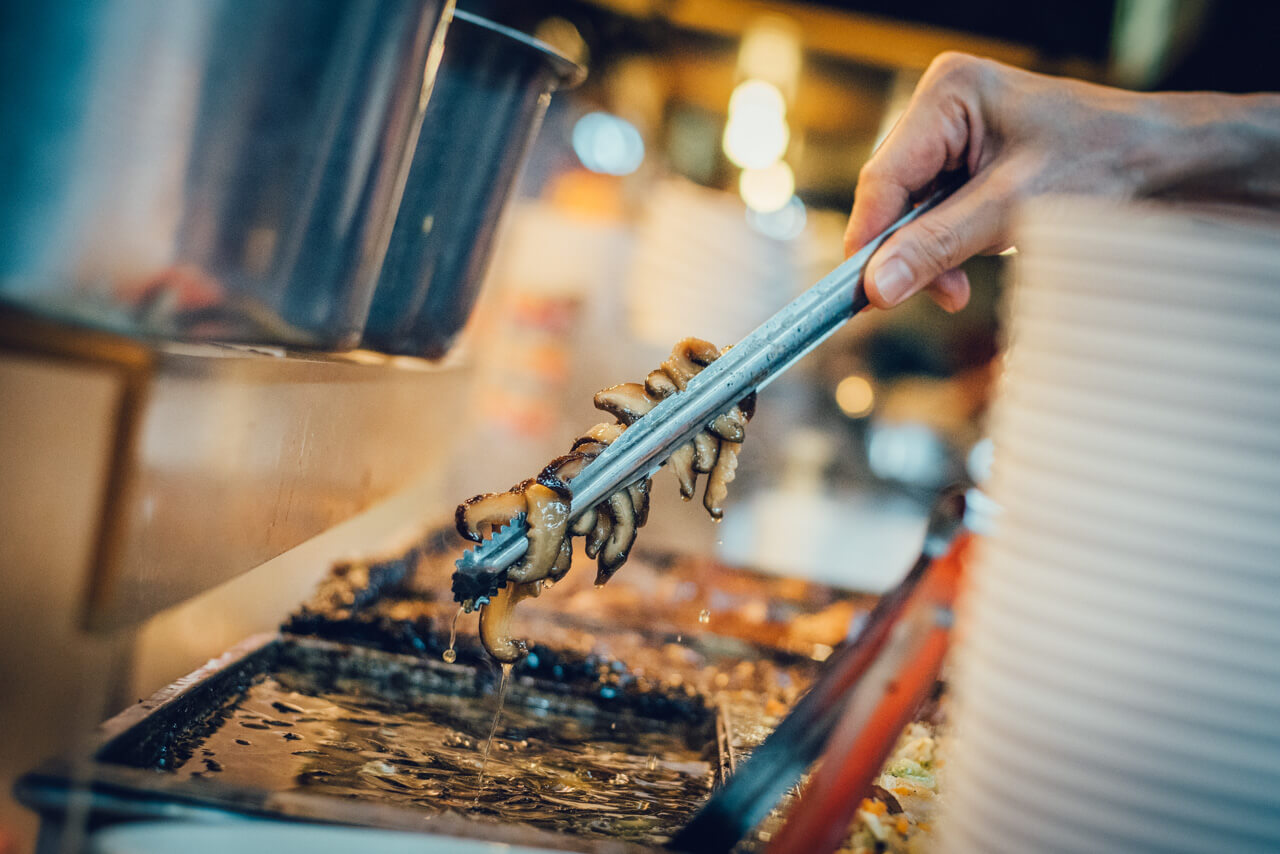
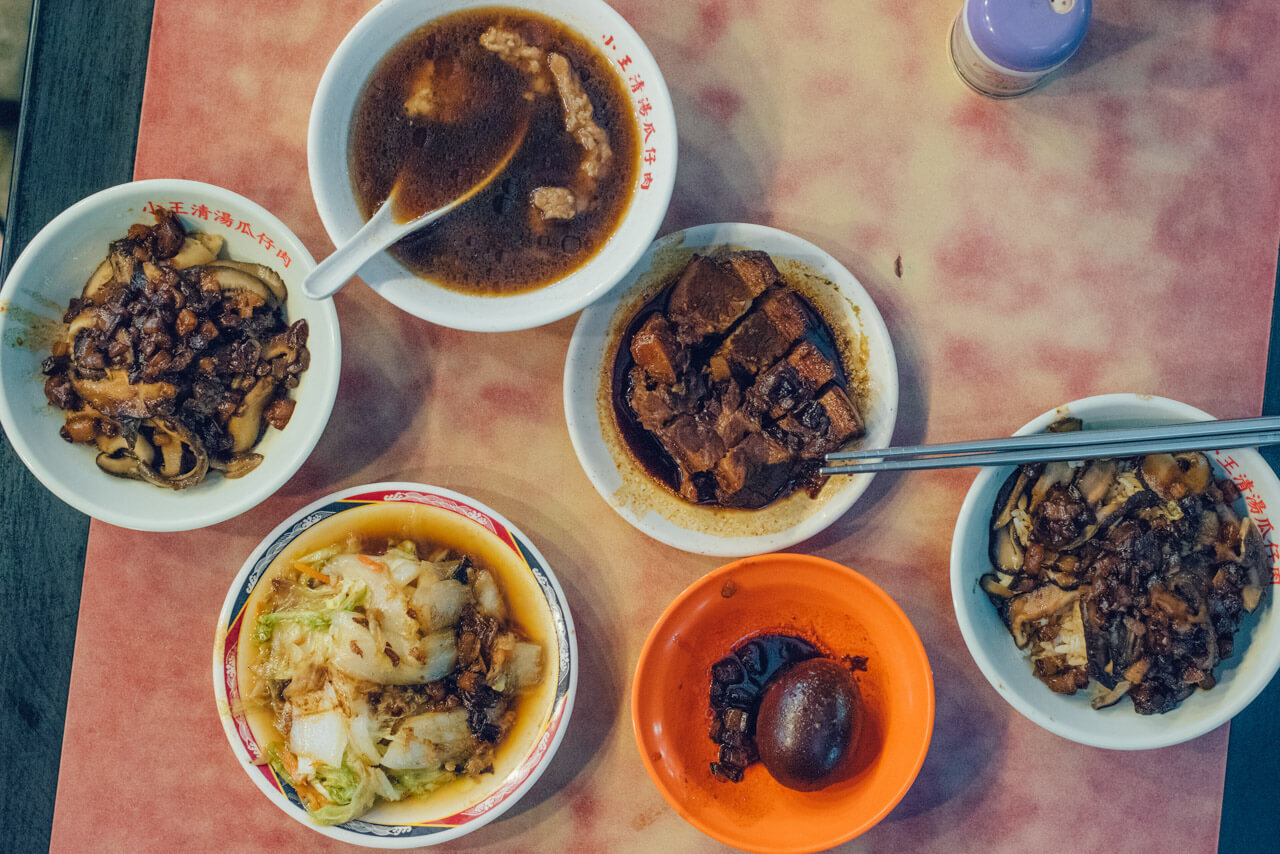
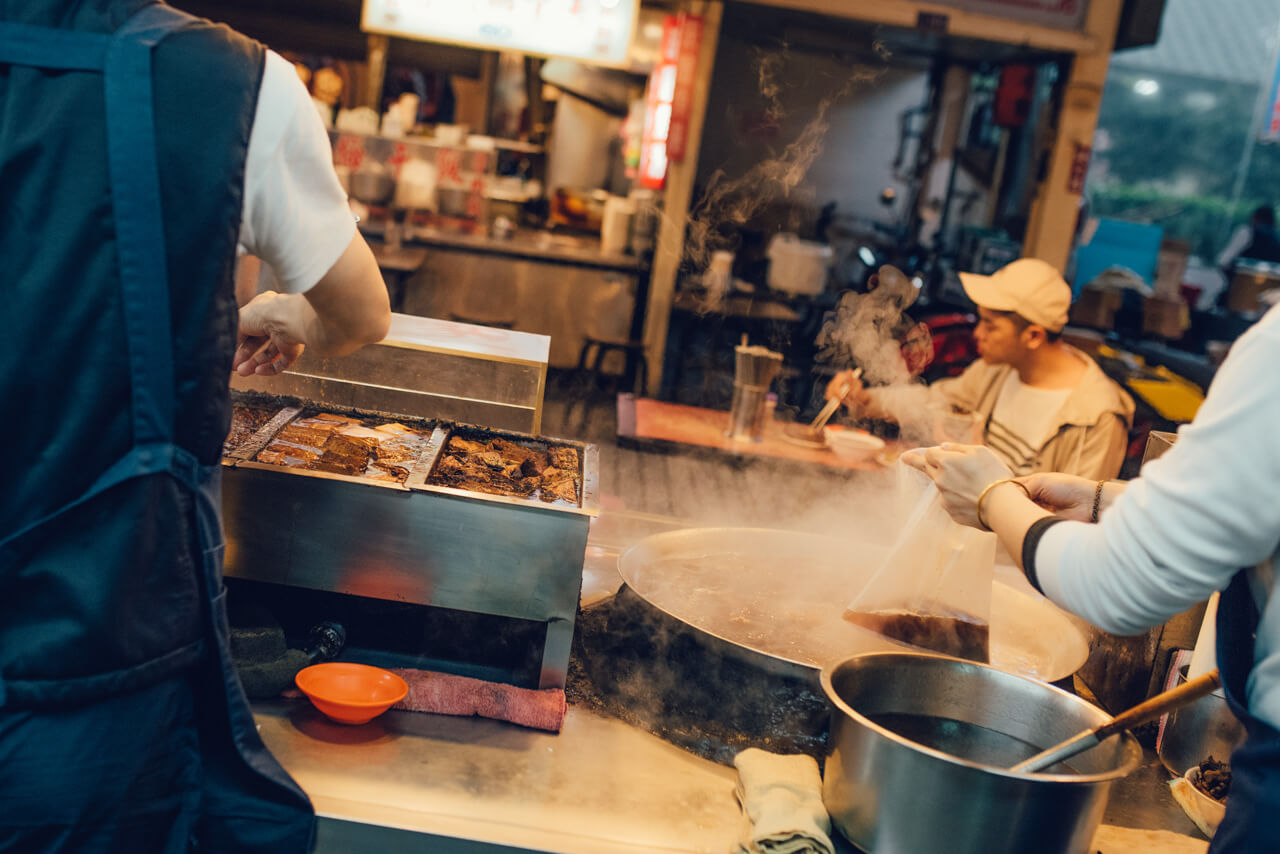
Walking out of Xiao Wang Braised Pork Rice, the sunny street was as clear and fresh as if one were walking along a Japanese shopping street.
Of the several braised pork rice stores, Soac’s favorite is the one near the Yuanshan MRT Station, known as the Mei-Man restaurant.

Soac sat in the corner of the restaurant, which is hidden in the alley, saying that each of the elements of braised pork rice, from the minced meat to the oil, the rice and the pickled cabbage, plays an important role. The fragrance of the lard oil carries the taste of the rice, which is quite delicious. And the environment is great as well. It is an old house with an old tree on the opposite corner, giving it a calm and relaxing atmosphere.
I raised my head to look at Grandma Mei-Man, who always wears a smile. Her cuisine is her way of sharing her happiness with her customers. The minced meat is stewed deliciously, almost as if there was a big sun contained inside.
Just what does braised pork rice mean to Taiwanese? Soac walked back and forth under the Banyan tree for a while before walking up to me and saying, “Have a bowl of braised pork rice, and everything will be okay. Not every food has this kind of magic. Braised pork rice has a taste that makes you feel at home.”
It’s true. After this trip, I want to order braised pork rice whenever I see it listed on the menu, especially when staying up late working. I feel that things will work out in the end. Braised pork rice is indeed the shared language among all Taiwanese. (Read more: Let’s Eat, the Taiwan ‘Way’)
Postscript
What is the origin of braised pork rice? I once read an article by the historical and cultural writer Cao Ming-zong, in which he said, “The origin of braised pork rice is intertwined with the culture of thriftiness in Taiwan. At the very beginning, people made use of the meat and oil left over at pork stands to make braised meat, adding it to rice. They used the Japonica rice that was imported to Taiwan from Japan during the Japanese colonial period in Taiwan, and developed the braised pork rice as part of Taiwanese cuisine.”
A long time ago, whenever the harvest season came, I would smell the fragrance of braised pork rice in our old house.
I grew up in Yuanli, in rural Miaoli, before I was in kindergarten. When autumn was approaching, grandma would prepare food for the helpers in the fields. The kitchen would be filled will the smell of soy sauce for the braised pork rice. Grandma minced the pork that grandpa bought at the market, and mixed the fat pieces with the tender ones. She would cook the rice grown in our fields, and then add the braised pork. This was the main “snack” for the farmers and the helpers. When one felt exhausted, having a bowl of braised pork rice would fill one with energy, making them ready to get back to work.
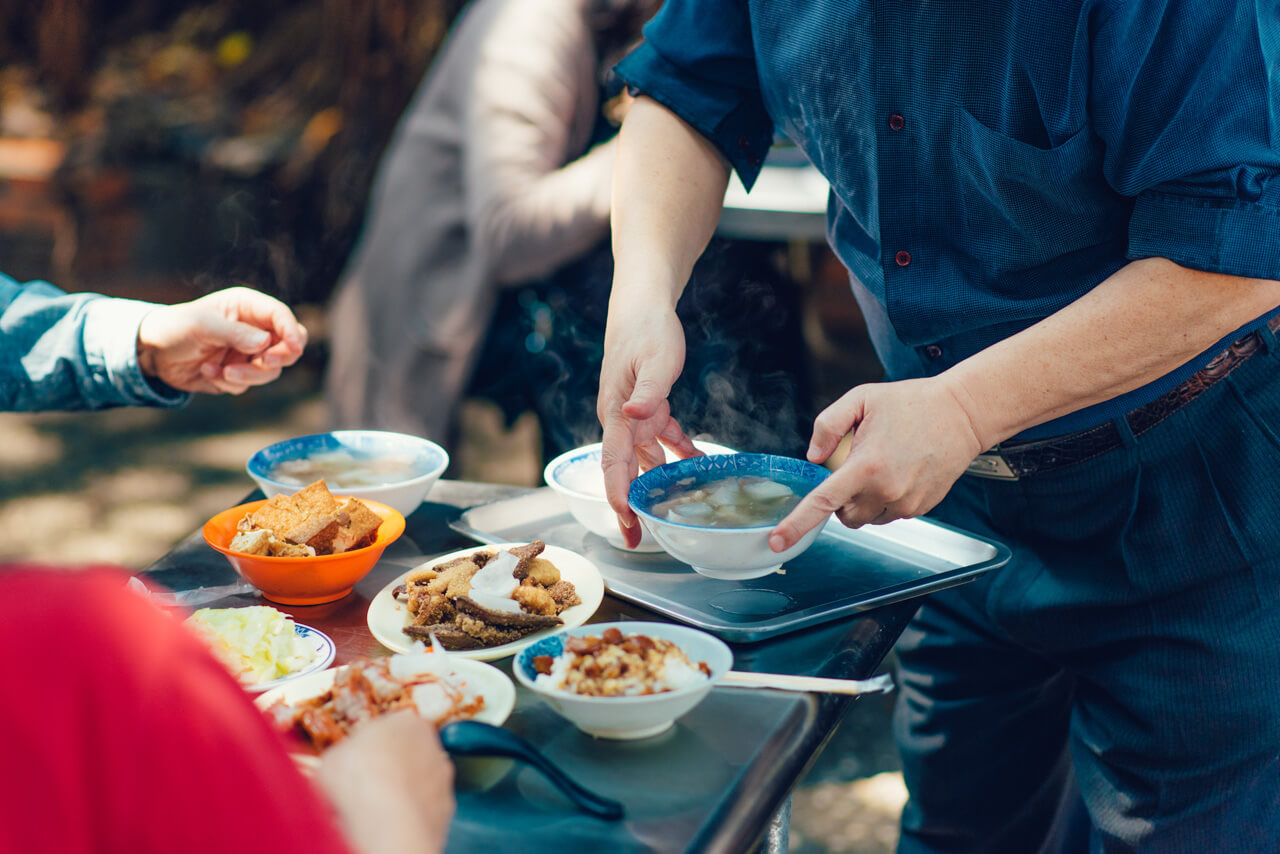
I then had the epiphany that, although Mr. Cao was certainly not wrong about the origin of braised pork rice, I felt that the identity of braised pork rice was surely embedded in my grandmother’s kitchen. The older generation was quite frugal. My grandma used the same knife for many decades, just as was the case with grandpa’s rattan chair. They fixed things when they were broken and used them again. And some dishes were only served on specific days.
The food can speak. The most refined part of our culture is hidden in our daily meals.
Proofread by TC Lin
Edited by Sharon Tseng
(This article is reproduced under the permission of CommonWealth Magazine English Website. It does not represent the standpoint of Taiwan Scene.)
Read more: Getting a Handle on the Taiwanese “Hamburger” (Guabao)




